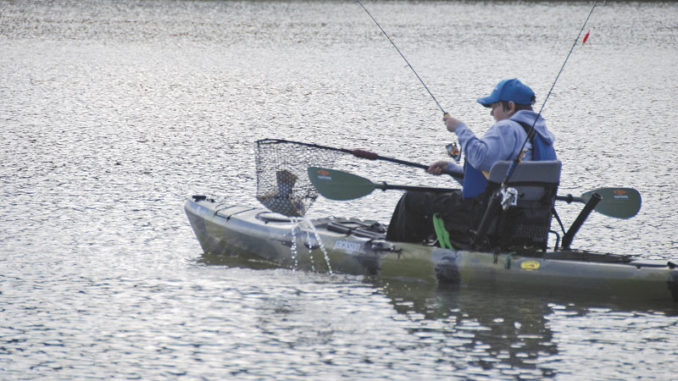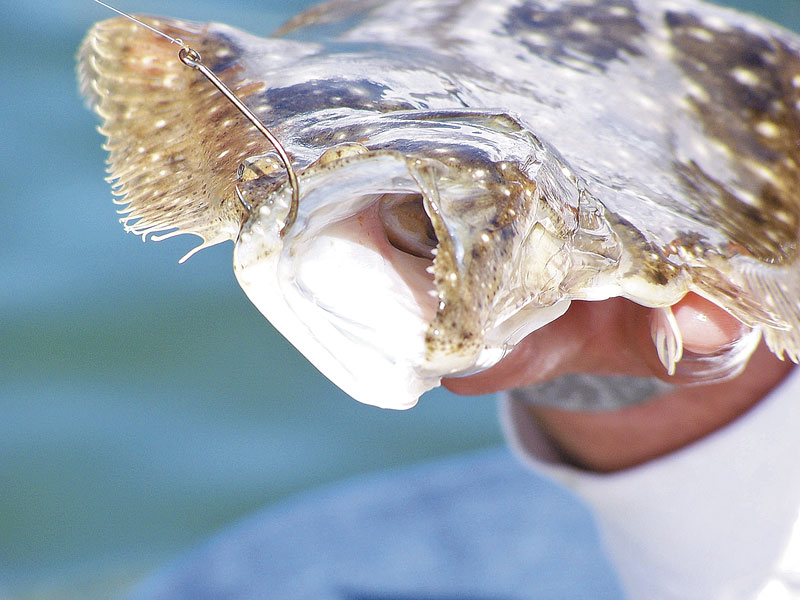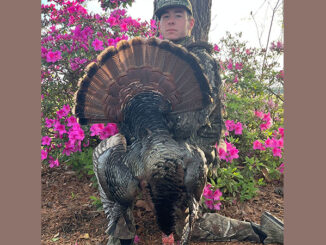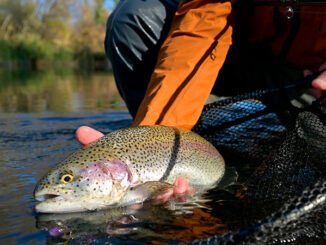
Floundering around takes on new meaning this month
Though the association is rarely made, it would seem that fishing boats capable of maneuvering in just inches of water would go hand in hand with fish that can be completely submerged in just inches of water. Obviously we’re talking about kayaks and flounder.
Often, kayak anglers treat flounder the same way as any other inshore angler, regardless of the watercraft underneath. Most flounder are caught incidentally while fishing for redfish or trout. Flounder are not an unwelcome species. On the contrary, most anglers relish flounder for their respectable fight on the rod and their excellent qualities on the table. But only a handful of anglers specifically target flounder. And only a percentage of those do so from a paddle boat.
Factor in reduced open seasons, increased size limits and diminished creel limits and it’s understandable that flounder have waned in popularity as a standalone fish to target from a paddleboat.
One of the most reliable signs of fall along the coast happens when inshore water temperatures begin to wane and scads of mullet and other baitfish (and shrimp) species migrate out of the creeks. Along the same time, flounder species, of which there are three that call the Carolinas home, begin to make their way from the estuaries and creeks to their eventual offshore wintering grounds.

Look for signs
Few paddleboat anglers realize that just like flounder gigging, it’s very possible to sight fish for flounder from a kayak. That’s not necessarily done by seeing the fish, but by recognizing the signs that flounder are in the area.
A flounder is the only fish that can ambush bait in just 6 inches of water without the angler ever seeing the fish. That’s one indicator – a splash right next to the bank with no back out of the water, like a redfish. The other indicators are birds. When paddling along a quiet bank in really skinny water and you see several birds staring down at the water, that’s probably going to mean a flounder is working that bank.
Another tip for finding fall flounder from a kayak is to look for culvert pipes in the backwaters where most powerboats can’t get.
A culvert that’s moving water from one side of a road to another, the kind you see off the side of the road when driving out to barrier islands, are potential flounder fishing hotspots.
Another location is anywhere you have some type of impoundment like a pond or lagoon. Fish the side where the water is moving. The rushing water on either side of the pipe creates deeper holes. And flounder love to hang out in those holes when the water is dumping into them.
Those locations are also prime for kayak fishing because they’re usually way back in a creek somewhere, hard to reach by motor boat, and you can get downstream where most bank anglers can’t reach.
Finally, the classic sandy areas that offer ambush points where flounder can lie downcurrent is a great place to target flounder, particularly when baitfish are migrating heavily in those areas.
The junction of two creeks is ideal, especially if there’s a sandy bottom and some oyster rake or other structure where flounder can hide. Stake out the kayak downcurrent from the intersection and cast up current, working the bait along the bottom back to the boat.
How to hook a flounder
Flounder are gregarious fish. If they bit like redfish, you’d regularly see a lot more flounder in magazines and on social media than you do. The problem with flounder is the way they attack prey by latching on to the bait first and then positioning it to go down it’s throat. That tendency makes them more difficult than most fish to hook and often leads novice anglers to believe that flounder won’t take large baits. Nothing could be further from the truth.
It takes patience to consistently hook flounder. A good rule of thumb is the larger the bait, the longer the wait before setting the hook.
For the average shallow water, legal-sized flounder that takes a 2- to 3-inch mud minnow, it’s best to start the countdown as soon as you feel the bite — anywhere from 10 to 30 seconds.
When fishing a deeper water drop-off for doormat flounder, up the ante to a 5- to 6-inch bait like a mullet or other baitfish. Under those circumstances, the wait extends anywhere from a minute to two full minutes.
After the initial bite, bring the rod tip up just to make sure the fish is still there and hasn’t changed his mind and spit the bait. You don’t want to aggravate the fish, just confirm he’s still down there chewing.
Look for the two tell-tale signs that it’s time to set the hook. The first would be if the fish turns and starts to swim off at any time during the wait. The second is reaching the appointed time.
Then comes the hardest part in flatfish fishing from a kayak. You’ve done everything right and gotten the fish to take the bait. You’ve waited the allotted time to make sure the hook is in the fish’s mouth and not hanging outside somewhere. Now it’s time to rip some lips.
Let the flounder do the work
But, when flounder fishing, it’s best not to set the hook in the conventional sense. When using a kahle hook, which works similar to, but provides a lot more hook-ups than, a circle hook, just start cranking the reel handle and let the hook sink itself.
Now, throw all that advice out the window when fishing artificial baits.
The bite on an artificial lure is a reaction bite, like a largemouth bass. The fish on the other end is not going to hold on to the bait and attempt to chew it down to the hook.
On an artificial bait bite, you set the hook and hope the treble hook or soft plastic hook finds it’s mark. At times, a flounder will latch on to an artificial bait and hold on to it during the fight to the kayak, only to open it’s mouth and let go at the surface.
One way to provide a little insurance when fighting a flounder from a kayak is to stand up and let the fish dive as it approaches boat side, then lift the rod tip straight up. Since these fish swim on their sides, any hook that is beneath the fish when the line is pulled up vertically has a better chance of hooking into the fish.





Be the first to comment